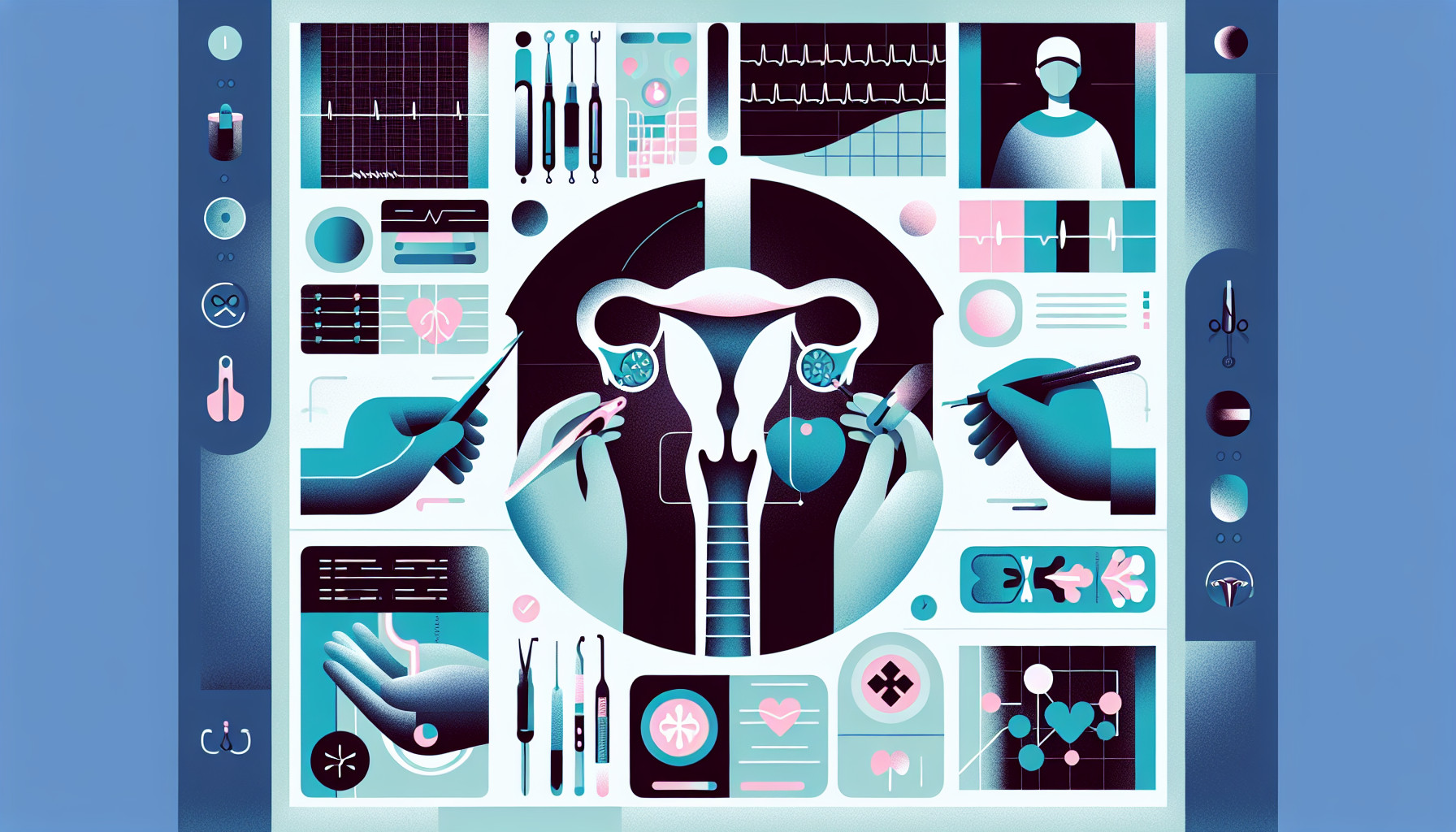Our Summary
This research paper reviews the effects of combining two treatments for women with heavy menstrual bleeding: endometrial ablation (a procedure that removes or destroys the lining of the uterus) and the immediate insertion of a levonorgestrel-intrauterine system (a type of hormonal IUD). The review found that combining these treatments can potentially reduce the need for additional surgeries.
The researchers looked at several studies and found that the combined treatment resulted in lower rates of hysterectomy (removal of the uterus) and re-intervention compared to endometrial ablation alone. Patient satisfaction and bleeding patterns also seemed to be better in the combined treatment group.
Despite these positive findings, the researchers noted that the studies they reviewed were of low quality. Therefore, they recommend further, high-quality research to confirm these results. The most common side effects reported in the combined treatment group were weight gain, mood changes, and headaches.
FAQs
- What are the potential benefits of combining endometrial ablation and the insertion of a levonorgestrel-intrauterine system?
- How does the combination treatment compare to endometrial ablation alone in terms of patient satisfaction and bleeding patterns?
- What side effects were most commonly reported in the combined treatment group?
Doctor’s Tip
A helpful tip a doctor might tell a patient about endometrial ablation is to discuss the option of combining the procedure with the immediate insertion of a levonorgestrel-intrauterine system to potentially reduce the need for additional surgeries and improve outcomes. It’s important to weigh the benefits and potential side effects of this combined treatment approach with your healthcare provider.
Suitable For
Patients who are typically recommended endometrial ablation are those who suffer from heavy menstrual bleeding, also known as menorrhagia. This condition can significantly impact a woman’s quality of life, causing physical discomfort, emotional distress, and interference with daily activities. Endometrial ablation is often considered for patients who have not responded well to other treatments such as medications or hormonal therapy.
Additionally, patients who are not planning to have children in the future may be good candidates for endometrial ablation, as the procedure can affect fertility. It is important for patients to discuss their reproductive goals with their healthcare provider before undergoing endometrial ablation.
Overall, patients who are experiencing heavy menstrual bleeding and have not had success with other treatments may benefit from endometrial ablation. However, it is important for patients to discuss their individual circumstances and treatment options with their healthcare provider to determine the best course of action.
Timeline
Before endometrial ablation:
- Patient experiences heavy menstrual bleeding.
- Patient may have tried other treatments such as medications or hormone therapy.
- Patient consults with a gynecologist to discuss treatment options.
- Gynecologist recommends endometrial ablation as a potential solution for the heavy menstrual bleeding.
After endometrial ablation:
- Patient undergoes endometrial ablation procedure.
- Gynecologist may recommend the immediate insertion of a levonorgestrel-intrauterine system to further improve outcomes.
- Patient experiences potential side effects such as weight gain, mood changes, and headaches.
- Patient may have reduced need for additional surgeries such as hysterectomy.
- Patient reports improved bleeding patterns and overall satisfaction with the combined treatment.
- Gynecologist recommends follow-up appointments to monitor patient’s progress and address any concerns.
What to Ask Your Doctor
- What are the potential benefits of combining endometrial ablation with the insertion of a levonorgestrel-intrauterine system for my heavy menstrual bleeding?
- What are the potential risks or side effects associated with this combined treatment?
- How long does the procedure typically take and what is the recovery process like?
- How long can I expect the effects of the treatment to last?
- Are there any restrictions or limitations on activities following the procedure?
- What are the chances of needing additional surgeries or interventions after this combined treatment?
- How will this treatment affect my future fertility or reproductive health?
- Are there any alternative treatment options I should consider before moving forward with this procedure?
- What should I do if I experience any concerning symptoms or side effects after the procedure?
- Are there any specific lifestyle changes or precautions I should take to optimize the effectiveness of the treatment?
Reference
Authors: Oderkerk TJ, van de Kar MMA, van der Zanden CHM, Geomini PMAJ, Herman MC, Bongers MY. Journal: Acta Obstet Gynecol Scand. 2021 Oct;100(10):1779-1787. doi: 10.1111/aogs.14219. Epub 2021 Jul 12. PMID: 34165779
